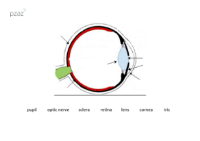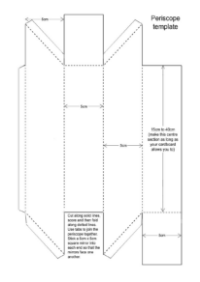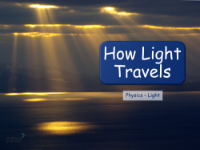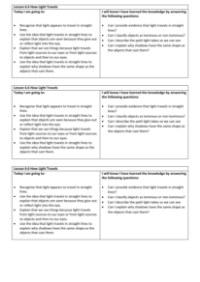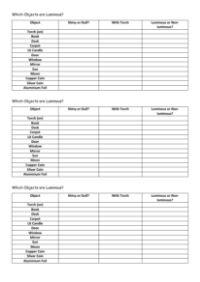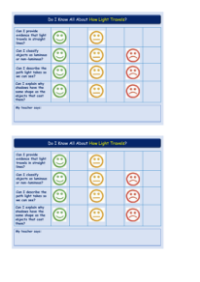How Light Travels - Lesson Plan
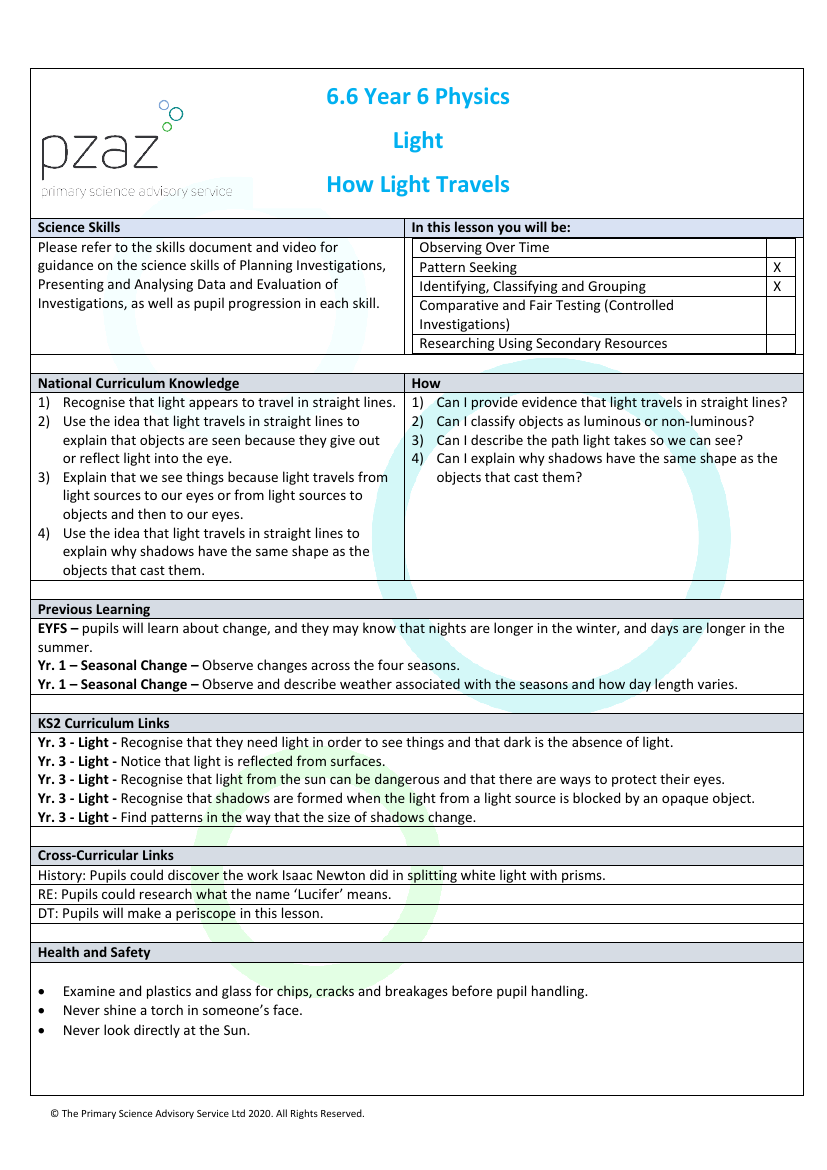
Science Resource Description
This comprehensive lesson plan from The Primary Science Advisory Service Ltd delves into the fundamental principles of how light travels. It is tailored for Year 6 pupils and aligns with the National Curriculum, building on previous learning from the Early Years Foundation Stage through to Year 3. The lesson aims to help students recognise that light travels in straight lines and to understand how this concept explains the way we see objects and the formation of shadows. Through a series of engaging activities, pupils will gather evidence to support the idea that light travels in straight lines, classify objects as luminous or non-luminous based on whether they emit or reflect light, and explain how shadows are created. The lesson also touches on the importance of light for seeing and introduces influential scientists in the field, such as Isaac Newton and James Clerk Maxwell.
Activities include practical experiments such as 'Three Holes and a Torch', where pupils observe the path of light through aligned holes in cardboard, and 'The Tube and Candle', which demonstrates that light must enter our eyes for us to see. Students will also classify items as luminous or non-luminous, and explore shadow shapes with toy figures and a torch. They'll engage in drawing ray diagrams to represent the behaviour of light and investigate how lenses affect light paths, learning about convex and concave lenses in relation to eyesight. A hands-on activity involves constructing periscopes to understand reflection and the path of light. Health and safety considerations are highlighted, ensuring that all activities are conducted safely. The lesson concludes with a plenary session where pupils reflect on their understanding of light, including its travel, interaction with objects, and the formation of shadows.


